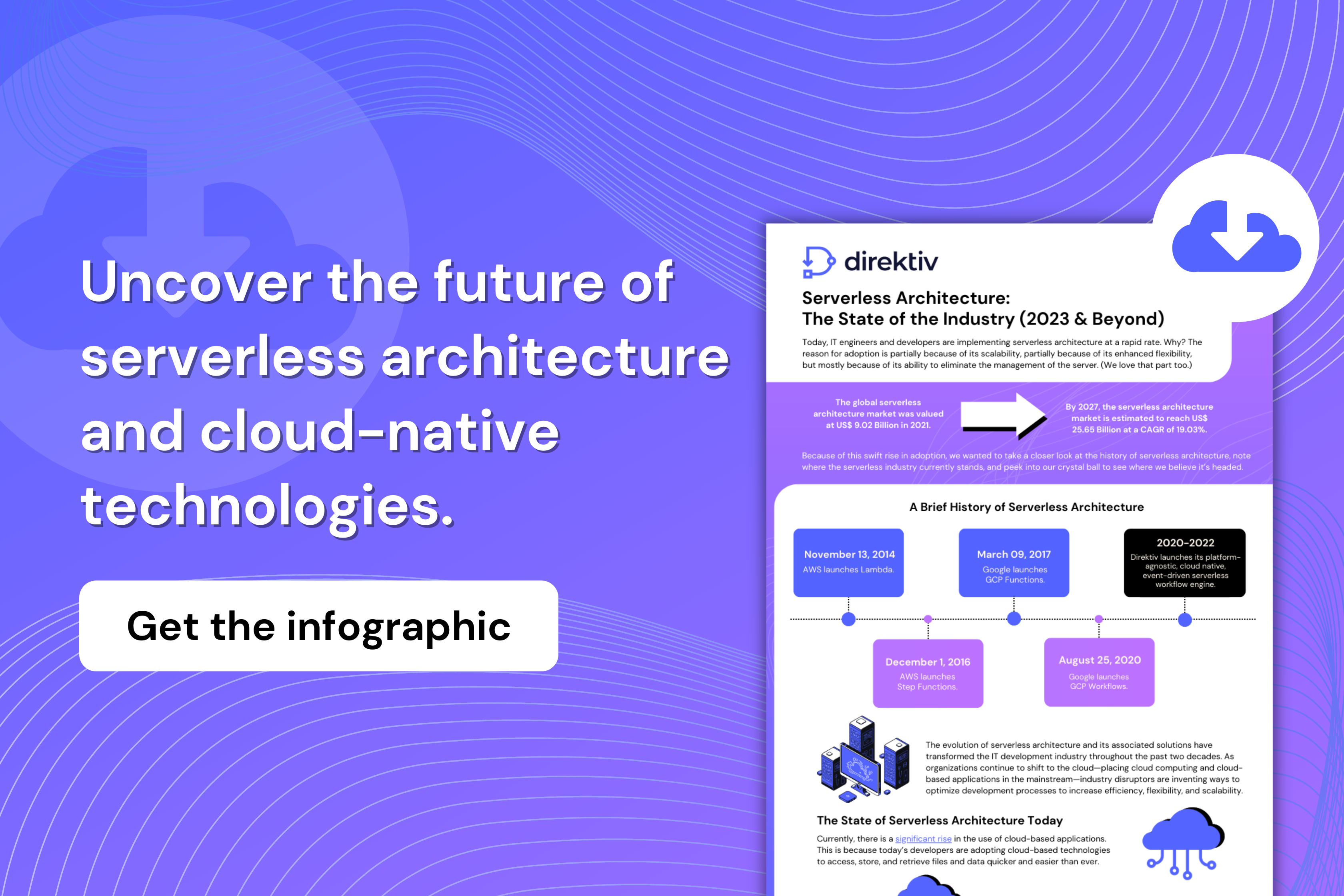Serverless Architecture Will Be a Primary Driver of Digital Transformation in 2023: Here's Why

You’ve likely heard the term “digital transformation” nearly every day throughout the past few years. And it makes sense. Digital transformation is no longer a nicety, it’s a must-have if you want to remain competitive in today’s modern world. The thing is, there is no one-size-fits-all way to modernize your infrastructure to meet today’s consumer and market demands. However, we do expect one key concept to become the primary driver of digital transformation in 2023: serverless architecture.
It’s true! By 2027, the serverless architecture market is estimated to reach US $25.65 Billion at a CAGR of 19.03%. Why is serverless architecture so special, you ask? 🤔It enables you to build a cloud-native model in which you can run all of your apps and services without the hassle of managing servers. Aside from obviously saving hours of time on server maintenance, serverless architecture also offers enhanced flexibility and control. Plus, serverless workflows easily plug in to existing builds and CI/CD toolchains, while giving enterprises the freedom to move workloads wherever they run best.
In this article, we’re diving into how serverless architecture speeds up digital transformation and why we expect serverless to be a paramount force in digital transformation strategies throughout 2023. ⬇️
Serverless Architecture Reduces the Risk of Transformation
Often when organizations are beginning their journey to digital transformation, there are typically risks involved including, cloud security misconfiguration, lacking the expertise to shift to the cloud effectively, or vendor lock-in. Getting locked in to one cloud vendor can lead to roadblocks down the line of transformation.
(Source: Giphy)
Vendor lock-in can ensure you’re unable to switch vendors due to cost or complexity. Even TechTarget states, “The fear of vendor lock-in is often cited as a major impediment to cloud service adoption.” Yet, with the right technology built on serverless architecture, you can become platform and service-agnostic.
Direktiv, an event-driven serverless workflow engine, is completely cloud or service agnostic—it can run anywhere and can use any service. Since the platform uses serverless architecture, you can leverage the flexibility of the public cloud, the security of on-premise hosted platforms, or the ability to integrate the services and products of SaaS environments.
➡️ Discover the freedom to run any component on any platform or cloud provider using Kubernetes—check out our platform overview.
Loose Coupling Increases Scalability
Digital transformation is a slow and steady process, but as each step is accomplished, organizations need to scale… and they need to do it fast. ⏩Often, this causes friction when the organization’s current infrastructure simply cannot handle the influx of data or scale to meet business needs. And, you guessed it, here’s where serverless architecture can help.
Serverless Architecture + Loosely Coupled Microservices = Infinite Scalability 🚀
Serverless architecture leverages microservices—small, independent software components owned by self-contained teams that communicate via clearly defined APIs—to extend systems. Because they are loosely coupled, microservices can each be modified without impacting other components in the system. For example, if a node fails, it’s an isolated event, meaning that no other nodes or components will be affected.
How does this help increase scalability?
Loose coupling enables these microservices to trigger events without needing to update existing components, allowing systems to adapt quickly. Ultimately, serverless architecture and microservices work together to ensure that resources for the execution of the workflow and the subsequent integrations and containers are always available on demand. So as demand for your product grows, so does your capacity.
(Source: Giphy)
➡️ Check out how Direktiv runs containers that can be sequenced and orchestrated to support microservices.
Serverless Provides the Ability to Continuously Deliver
Continuous delivery is a key component of digital transformation. It’s a software engineering approach that helps teams put out new features, updates and fixes quickly and safely. And serverless architecture is the medium through which continuous delivery is possible.
Serverless architecture helps automate stages in CI/CD pipelines, including running tests and deployments. With the right technology, you can set up serverless workflows that trigger events to create a build and pull requests to automate tests. Serverless workflows enable you to not just continuously deliver code to production when needed, but to continuously deliver value to your product users. This ensures you meet customer expectations and demands, staying one step ahead of the competition. 😉
(Source: Giphy)
➡️ Get our eBook, A Quick-Step Guide to Serverless Event-Driven Architecture, to explore the ways in which serverless architecture helps you easily automate tasks and manage workloads to continuously deliver to production and your customers.
Final Thoughts
Digital transformation isn’t an overnight process. There are small steps you need to take before completely transforming your infrastructure and company into a modernized version of itself. Adopting serverless architecture is one of them.
With the Direktiv Event-Driven Serverless Workflow Engine, you can capitalize on serverless architecture to accelerate your digital transformation. Direktiv customers have seen the following outcomes:
- 70% improvement in time to market
- 60% increase in developer productivity
- 18% - 31% decrease in infrastructure, integration and development costs
What will you do with serverless architecture? Get started with Direktiv today and explore the possibilities!

.png)

